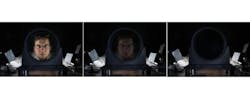Fiber laser produces femtosecond pulses with integrated fiber saturable absorber
Optical scientists from the Laser Centre of the Institute of Physical Chemistry of the Polish Academy of Sciences (IPC PAS) and the Faculty of Physics of the University of Warsaw (both in Warsaw, Poland) have generated ultrashort laser pulses in an optical fiber by using a method previously considered as physically impossible to achieve.1 The new laser design, which is devoid of any mechanically sensitive external parts, is patent-pending.
Pulses can be generated in fiber lasers by a system known as a saturable absorber. When the light intensity is low, the absorber blocks light; when it is high, it lets it through. Since in femtosecond pulses the light intensity is much greater than in a continuous beam, the parameters of the absorber can be adjusted so that it only lets through such pulses.
"Up to now, graphene sheets, among others, have been used as the saturable absorbers, in a form of a thin layer deposited on the tip of the fiber," explains Jan Szczepanek, a PhD student from the Faculty of Physics of the University of Warsaw. "But the diameters of optical fibers are on the order of single microns. Even a little energy cramped in such a small cross-section has a significant density per unit area, affecting the lifetime of the materials. Therefore, if an attempt was made to increase the power of the femtosecond pulses, the graphene on the tip of the connector was destroyed. Other absorbers, such as carbon nanotubes, may also undergo degradation."
To generate higher energy femtosecond pulses in the optical fiber, the Warsaw physicists decided to improve saturable absorbers of a different type that relies on nonlinear optical effects causing a change in the refractive index of glass.
A nonlinear artificial saturable absorber works as follows. At the input, linearly polarized light is divided into a beam with a low intensity and a beam with a high intensity. The medium of the absorber can be chosen so that both light beams to experience a slightly different refractive index: that is, for them to travel at slightly different (phase) velocities. As a result of the velocity difference, the plane of polarization starts to rotate. At the output of the absorber, a polarization filter only lets through waves oscillating perpendicularly to the plane of polarization of the incoming light. When the laser is operating in continuous mode, the light in the beam is of a relatively low intensity, an optical path difference does not occur, the polarization does not change, and the output filter blocks the light. At a high enough intensity typical for femtosecond pulses, the rotation of polarization causes the pulse to pass through the polarizer.
Birefringent fiber is saturable absorber
For the saturable absorber with polarization rotation to work, the fiber not only must have different refractive indices in different directions (thus it has to be birefringent); in addition, both indices should also be stable. The problem is that in ordinary optical fibers birefringence occurs accidentally, for example due to stress caused by the touch of a finger. Lasers built in this manner are extremely sensitive to external factors. In turn, birefringence of the polarization-preserving fibers is so large that the light propagates in them in only one direction and the construction of artificial saturable absorbers becomes physically impossible.
"Birefringent optical fibers retaining the polarization state of the light entering them are already in production in the world," says Szczepanek. "We are the first to demonstrate how they can be used to construct a saturable absorber: we cut the optical fiber into segments of an appropriate length and then reconnect them, rotating each successive segment 90° in relation to its predecessor."
"Rotation means that if in one segment a pulse with, shall we say, vertical polarization travels slowly, in the next it will run faster and catch up with the second pulse, polarized perpendicularly," explains Yuriy Stepanenko of IPC PAS. "A simple procedure has therefore allowed us to eliminate the main obstacle on the road to increasing the energy—that is, the great difference in velocities between pulses of different polarities, so typical for all polarization preserving fibers."
The more rotated segments there are, the better the quality of the pulses generated in the fiber. In the laser built in the Warsaw laboratory, the saturable absorber consisted of a fiber with a length of approx. 3 m, divided into three segments, and a filtering polarizer. The potential number of rotated segments can be increased up to even a dozen or so.
The new laser produces high-quality femtosecond pulses, and their energy can be up to 1000 times larger than typical for lasers with material absorbers. In comparison to the devices with artificial absorbers, the laser made by Warsaw scientists has a much simpler construction and therefore greater reliability.
Source: https://www.eurekalert.org/pub_releases/2017-02/iopc-iw022317.php
REFERENCE:
1. Jan Szczepanek et al., Optics Letters (2017); https://doi.org/10.1364/OL.42.000575
About the Author
John Wallace
Senior Technical Editor (1998-2022)
John Wallace was with Laser Focus World for nearly 25 years, retiring in late June 2022. He obtained a bachelor's degree in mechanical engineering and physics at Rutgers University and a master's in optical engineering at the University of Rochester. Before becoming an editor, John worked as an engineer at RCA, Exxon, Eastman Kodak, and GCA Corporation.

